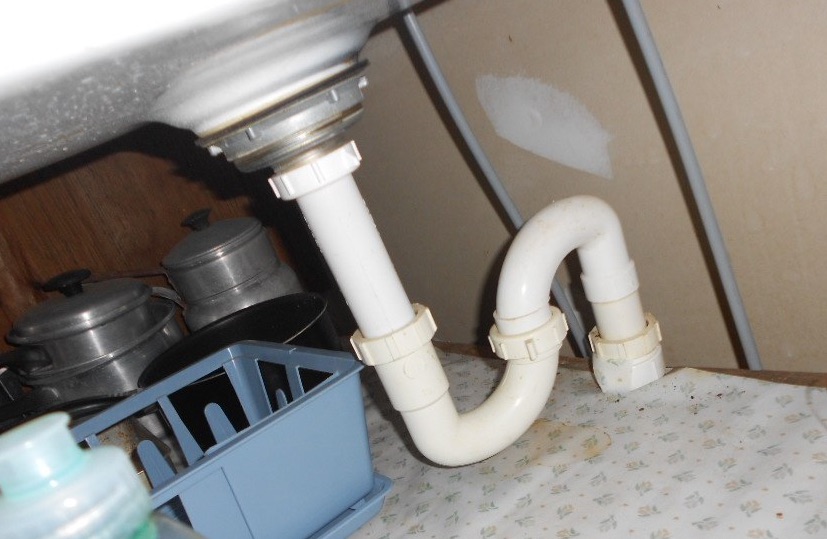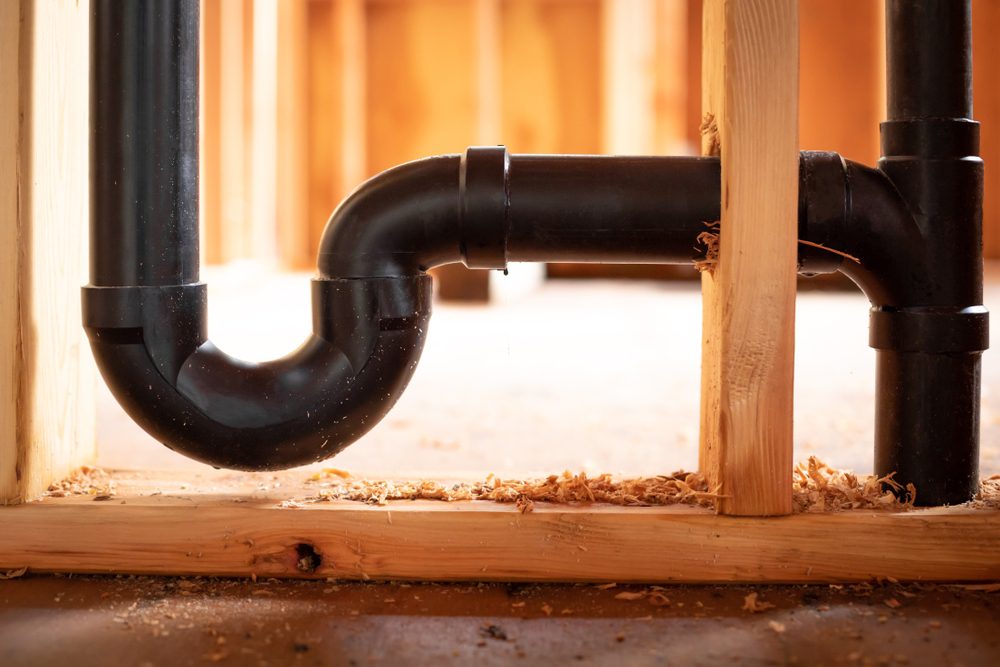Understanding The Significance of Proper Ventilation in Plumbing Systems
Understanding The Significance of Proper Ventilation in Plumbing Systems
Blog Article
We've discovered this post relating to The Upsides of Proper Ventilation in Plumbing Design directly below on the web and decided it made sense to share it with you on my blog.

Correct air flow in plumbing systems is frequently ignored, yet it is vital for keeping the performance and security of your home's plumbing. Air flow helps manage atmospheric pressure, avoid the buildup of dangerous gases, and guarantee the efficient elimination of waste. In this overview, we will certainly discover the significance of appropriate plumbing air flow, how it functions, and the advantages it brings to your pipes system.
Comprehending Air Flow in Plumbing
Ventilation in pipes describes the network of pipelines that allow air to flow with the drainage system. These vents offer numerous purposes, including managing air pressure within the pipes, stopping sewage system gases from entering the home, and aiding in the smooth circulation of wastewater.
Just How Ventilation Functions in Plumbing Systems
Air Pressure Regulation
Proper air flow preserves balanced atmospheric pressure within the pipes system. When water streams with pipelines, it displaces air. Without ample air flow, this variation can develop adverse stress, leading to slow drains or siphoning of water from catches, which can cause undesirable odors to seep into the home.
Stopping Drain Gas Accumulation
One of the most vital features of pipes vents is to stop sewage system gases, such as methane and hydrogen sulfide, from collecting within the home. These gases can pose severe wellness threats and are highly flammable. Vent pipes allow these gases to leave safely outside.
Helping in Waste Removal
Ventilation assists in the effective removal of wastewater by avoiding airlocks in the drain system. When air can flow easily via the vents, it allows water and waste to stream efficiently through the pipes, reducing the danger of obstructions and back-ups.
Types of Plumbing Vents
Key Heap Vent
The major stack vent, likewise called the air vent stack, is the key vent in a pipes system. It expands from the main drain align with the roof covering, permitting gases to get away and fresh air to enter the system.
Branch Vent
Branch vents attach to the main pile vent and offer individual fixtures, such as sinks, toilets, and showers. These vents make certain that each component has appropriate air flow to work appropriately.
Air Admission Valve (AAV).
An Air Admittance Shutoff (AAV) is a one-way shutoff that enables air to enter the pipes system without the requirement for a standard vent pipeline prolonging through the roof. AAVs are generally utilized in remodellings or locations where setting up a basic air vent is unwise.
Indicators of Poor Ventilation in Pipes.
Slow Draining Fixtures.
If your sinks, tubs, or commodes are draining gradually, maybe an indication of poor ventilation. Inadequate air circulation can develop a vacuum cleaner effect, making it difficult for water to drain appropriately.
Gurgling Sounds.
Gurgling sounds coming from drains are often a result of air being drawn through water catches due to unfavorable stress in the pipes. This is a clear sign of not enough air flow.
Unpleasant Odors.
Drain smells inside your home are a warning that your pipes system is not properly aerated. This can imply that sewage system gases are not being effectively aired vent outside, resulting in possibly hazardous conditions.
Usual Air Flow Errors.
Insufficient Vent Sizing.
Utilizing undersized air vent pipelines can cause poor air flow and stress inequalities in the system. It's vital to utilize vents that fulfill the certain demands of your plumbing system.
Improper Vent Positioning.
Positioning vents too far from the fixtures they serve can decrease their effectiveness. Correct placement makes sure that air can flow openly and effectively with the system.
Ignoring Code Requirements.
Building ordinance offer specific guidelines for pipes ventilation. Overlooking these codes can lead to a system that falls short to work properly and may lead to pricey repair work or health hazards.
Advantages of Correct Ventilation.
Improved System Efficiency.
Effectively ventilated pipes systems run extra effectively, with fewer blockages, faster draining pipes, and much less pressure on the pipes. This performance prolongs the life-span of the plumbing system.
Improved Air Quality.
By avoiding drain gases from entering your home, appropriate air flow adds to far better interior air high quality, making your living environment healthier and more comfy.
Protecting Against Water Damage.
Sufficient air flow assists avoid water from being siphoned out of catches, which can result in sewer gases getting in the home and causing water damages over time.
Actions to Ensure Appropriate Ventilation.
Consulting Plumbing Codes.
Constantly seek advice from local plumbing codes when making or modifying your plumbing system. These codes supply the necessary guidelines for appropriate airing vent and ensure your system fulfills safety standards.
Normal Examination and Maintenance.
Regular assessments can help determine potential air flow concerns before they come to be major problems. Upkeep jobs, such as cleaning air vent pipelines and checking for obstructions, are important for keeping the system in good working order.
Specialist Installment.
For new installments or major adjustments, it's important to work with a specialist plumbing. They have the experience to ensure the air flow system is appropriately made and mounted according to code.
Verdict.
Correct air flow is an important element of any type of plumbing system, ensuring that it operates effectively and safely. By recognizing the value of ventilation, acknowledging the indicators of bad ventilation, and taking steps to preserve your system, you can protect against costly concerns and protect your home's air quality.
4 Things You Should Know About Your Plumbing Vents
What Plumbing Vents Are
Also called a vent stack, a plumbing vent is a vertical pipe attached to your drain line that runs through your roof. The plumbing vent pipe, or plumbing air vent, removes gas and odors from your plumbing system and allows fresh air to enter the pipes, helping the water to flow out of the drain pipes.
What Plumbing Vents Do
Plumbing vents have two basic functions. One of which is to allow unpleasant smelling wastewater and sewer gasses to escape your plumbing system instead of entering your home. Plumbing vent pipes are typically located on roofs, away from windows, to ensure the fumes exit the home completely.
The other function of the plumbing vent is to move fresh air into your plumbing system. This helps move water through every plumbing fixture in your house, like toilets and sink drains. Think of the way in which you need to let a little air into the bottle as you pour soda in order to make the drink flow smoothly.
Different Types of Plumbing Vents
True vent: This is the most common vent option. In simplest terms, a true vent is a vertical pipe attached to your drain line that exits through the roof. They often function as the main vent that other fixtures can connect to. Re-vent pipe or auxiliary vent: Attached to the drain line near specific plumbing fixtures, re-vent pipes run up and over to connect to the main vent. Common vent: Two plumbing fixtures installed on opposite sides of a wall are typically tied into the vent stack using something known as a sanitary cross. Wet vent: This venting option operates as a drain pipe and a vent at the same time. Wet vent drainage systems drain water from one fixture while venting the air from another. Although they’ve been used for over 100 years, wet vent systems have only recently been added to the plumbing code in many areas. If you’re planning on installing one in a bathroom remodel, make sure you check your local code prior to construction. Loop vent: For free-standing fixtures like kitchen island sinks, loop vents are ideal. These vent pipes run under the floor, rise from the P-trap, and create a loop inside the cabinet sink. Air admittance valve: An AAV is a one-way mechanical valve typically installed at the site of the plumbing fixture. AAVs allow venting to occur without having to tie into a larger venting system. They’re ideal for venting fixtures where you aren’t able to easily connect to an existing vent system. Common Plumbing Vent Issues
Although vent pipes typically don’t have water flowing through them, they’re still subject to many typical plumbing issues. For example, clogs are one of the most common problems associated with sewer vent pipes. If your vent pipe gets clogged, all of your plumbing fixtures tied into the vent stack will be affected.
A sink with a slow drain that bubbles and gurgles or a strong sewage smell around your toilet are both indicators that your toilet vent pipe is clogged. Because most vent pipes exit through the roof, old leaves, twigs or even a bird’s nest could be clogging the pipe.
Clogs in your vent pipe system cause a buildup of negative pressure, meaning that water won’t be able to flow out of your home very well. It’s similar to putting your finger over the opening of a straw to trap water inside. When you remove your finger, the water is able to flow out of the straw.
If you suspect you have any blockage in your vent, make sure you have a professional come examine the situation. Left unchecked, a blocked air vent can lead to other costly repairs, like leaks and sediment buildup.
Under Pressure
Pipe vents are essential aspects of a home’s plumbing system. Owning a home means learning about all sorts of things you never put much thought into before. But by understanding as much as you can about the important systems of your home, you can keep those budgets intact and those anxiety levels low.
https://www.homeserve.com/en-us/blog/home-improvement/plumbing-vents/

As an enthusiastic reader on What Is a Plumbing Vent and Why Is It Important, I figured sharing that blog post was sensible. Sharing is good. Helping people is fun. Thank you for taking the time to read it.
Visit Url Report this page